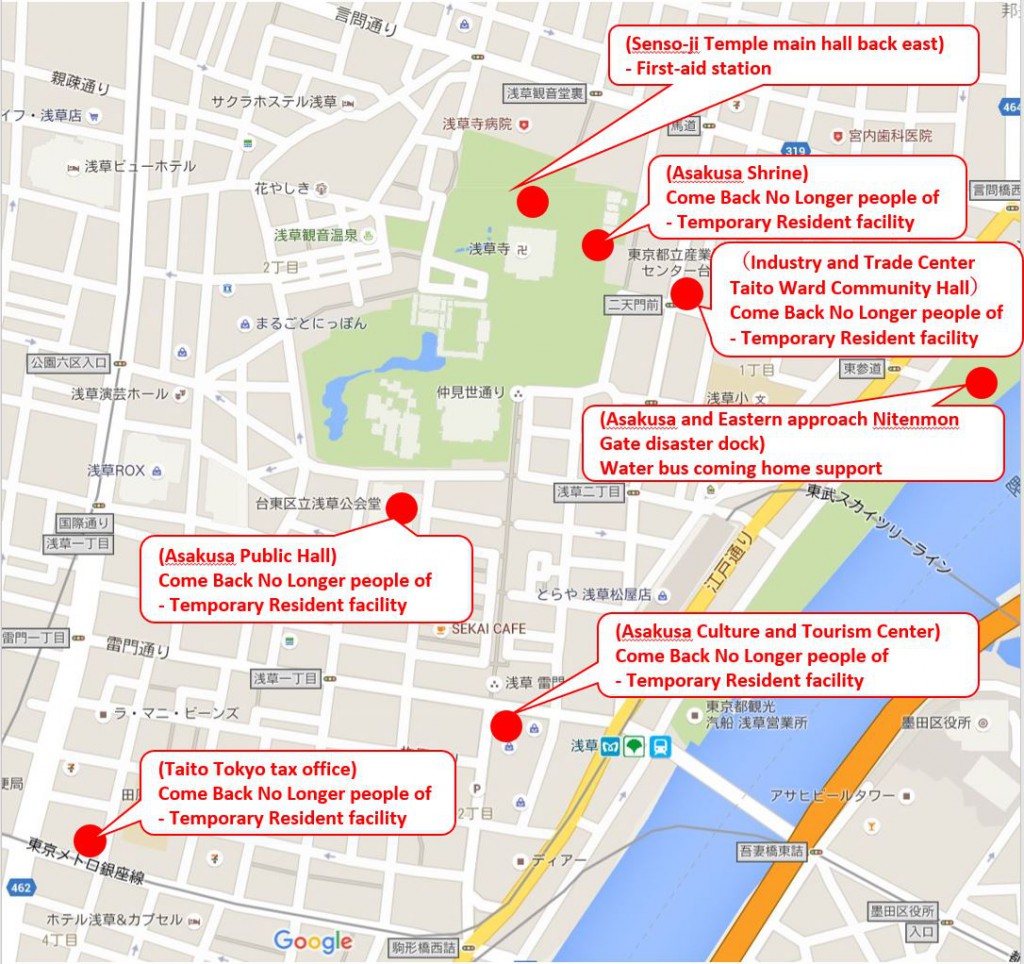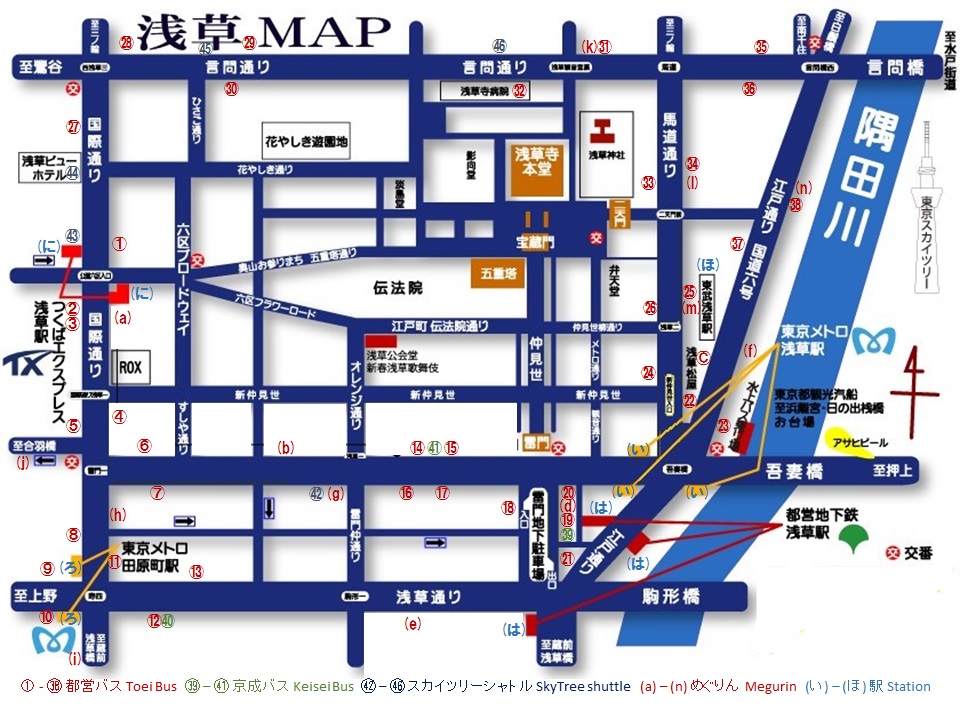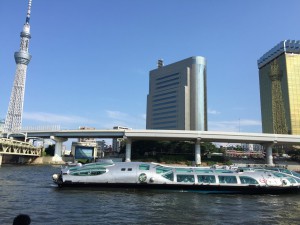Sightseeing in Oku Asakusa Sightseeing Tour
Edo people’s love Ikema Shotaro loved here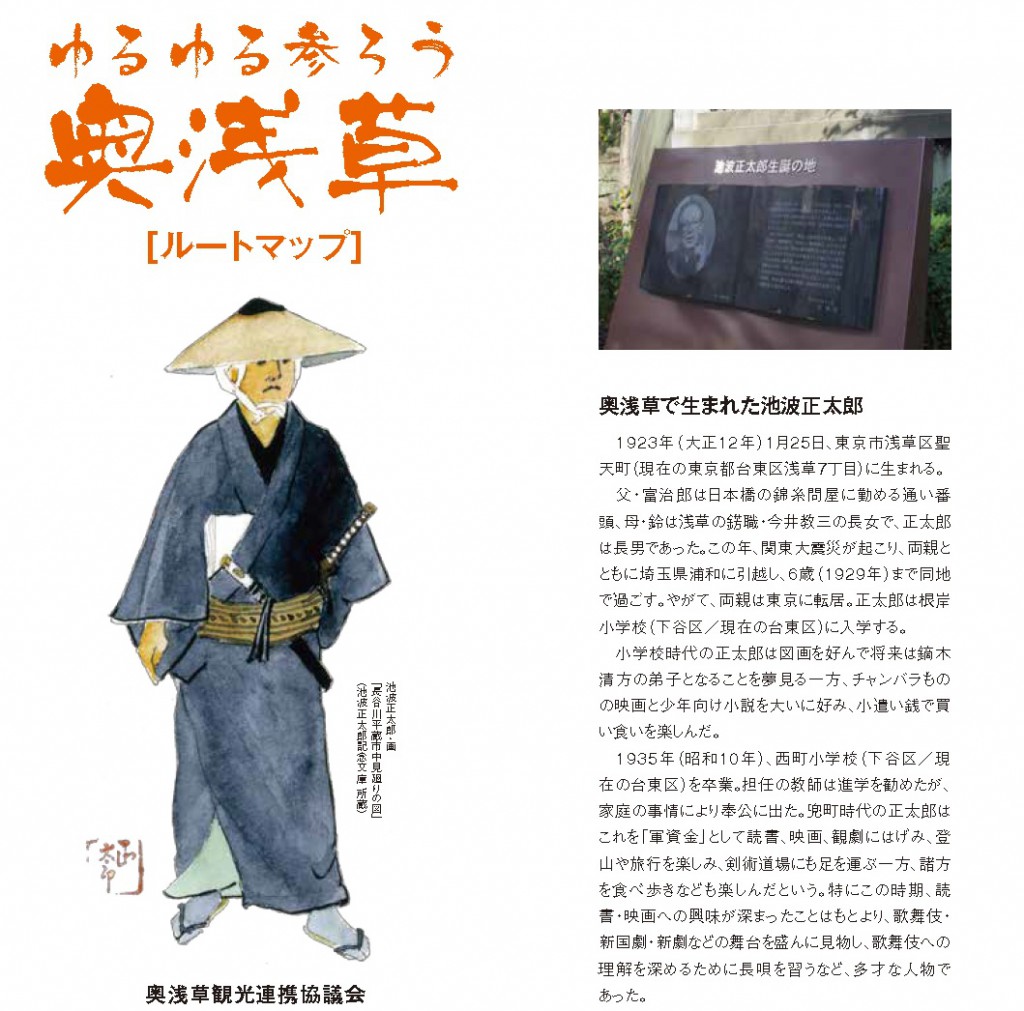
Asakusa represented by Kaminarimon and Sensoji Temple, Nakamise-dori.
“Oku Asakusa” hitting the north side of the Asakusa Temple is secretly becoming a hot topic now.Oku Asakusa facing the Sumida river in the east is also an area where you can see the history and romance of Yoshiwara and numerous temples and shrines, including the Edo Sansei site of Kabuki, in the north area of Asakusaji and the worship street.
After the Meiji Restoration, it became a place for leather industry development as we switched to Western shoes.It is attracting attention as retail modern information dissemination site that is not only old-fashioned sightseeing such as opening cafe and restaurant.
This time, a sightseeing tour will be held with the theme of “Shinkaro Ikegami’s world view” which is related to Asakusa.

root
① Okawabashi (AZUMABASHI)
Ogawa Bridge (Azumabashi)
In Okawabashi (Azumabashi) / Yasunaga 3 (1774), six townspeople bridged with the approval of the Edo shogunate.In the Sumidagawa river in the Edo period there were four bridges of the two countries, Permanent, Azuma, Shin-Ohashi bridge, other than Azumabashi bridge was built at the shogunate.The name is from “East Bridge” meaning that it is east of Edo or east of Edo, and the elegant notation “Azumabashi” was preferred.Meiji 9 (1876), officially became “Azumabashi”.
⇩
② SANYABORI HIROBA
Sanya Horigiri Square Asakusa 7-chome 1-22 Taito-ku, Tokyo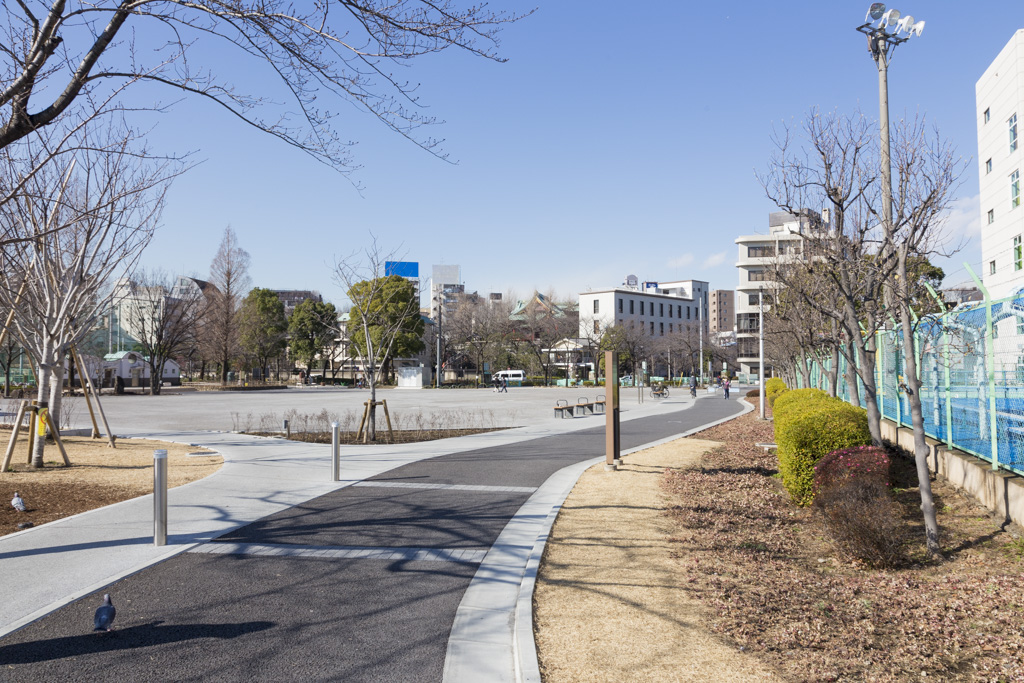
Sanya Hori Square / Square in the northern part of Sumida Park.”Asakusa Furusenma” which was a New Year’s Day event of the Asakusa Shrine in the Edo era will be shown at the Sumida Park Special Site, but in the past Sayakaya Hori Square used to be like a deer bundling grasses for exercise practice “Kusaka (Kasashi)” to shoot is held.
⇩
③ MATSUCHIYAMA SHOUDEN
Buddha mountain sainte 4-1 Asakusa 7- chome, Taito ku Tokyo
Budding mountain saint / Mr. Honjin is holy.Asakusa is a lively area in the precincts, silence spreads and it is only called powerful power spot.In and around the precincts, radish and purse strings are displayed as carvings and pictures, which are the symbols of “Buddha mountain holy weather”.As having the effect of eliminating poison and annoyance in the body, providing radishes has a meaning to wash and cleanse themselves.In addition, the purse dress represents a gold bag, and many people come to the dressing, wishing for business prosperity.
⇩
④ CHOSHO JI
Chang Changji Temple in Taito-ku, Tokyo 2-32-16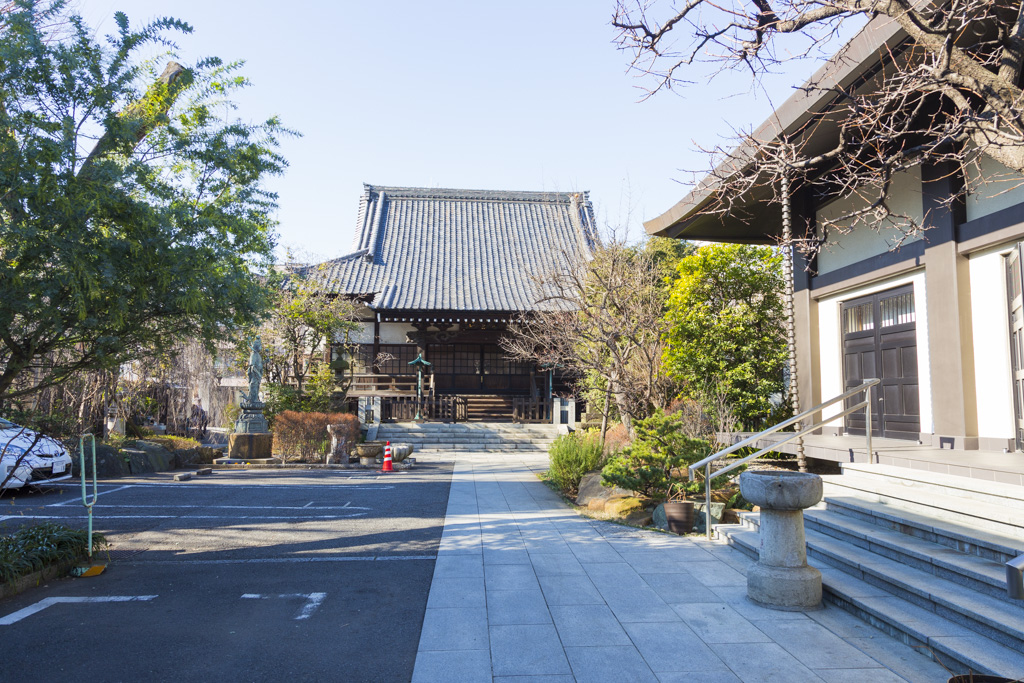
The Langhai Buddha who served as the Asakusa temple ceremony opened as Myoji Temple in Hiroyasu 2 (1279).After that, after being flooded with water, revived as the former welfare first year (1321) current location, renamed Changchangji Temple.
Deep Eiyuan Changjiang Temple is located in the west of the departure of Imado.This temple is said to have been a historic site of Nichiren Buddhism, a senior citizen of the opening mountain, a boss of Sensoji temple at the beginning.(From Onepaira Kokado 11 Volume “Notice”)
⇩
⑤ HONSHO JI
Honjoji 1-1-2 Kiyokawa, Taito-ku, Tokyo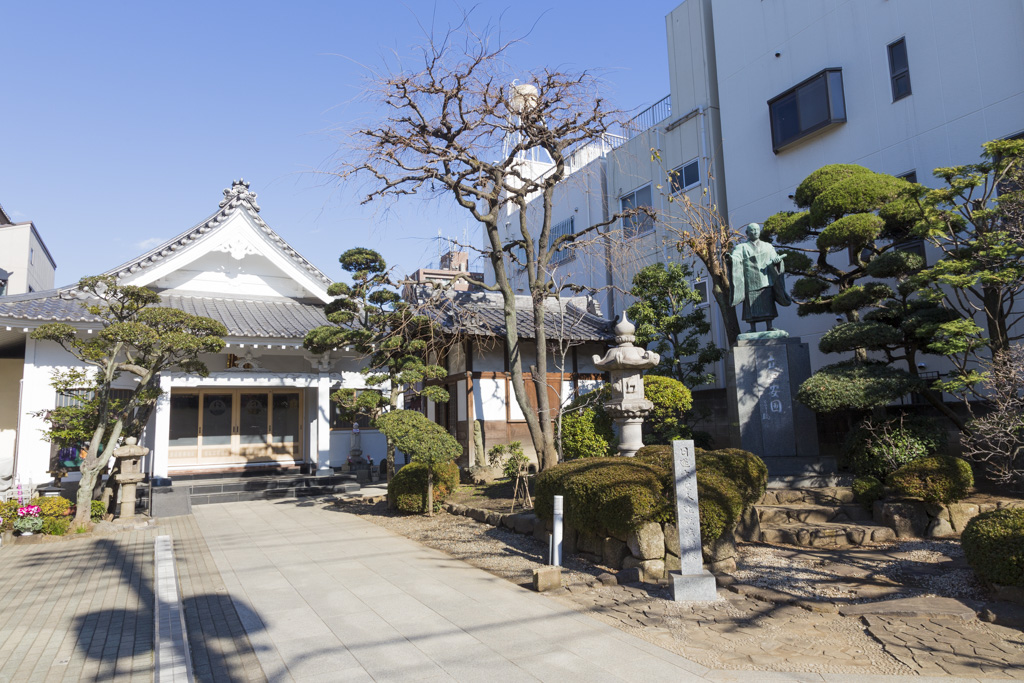
There is a grave of Akiyama self-cloud (Shunzanji yu) famous as “God of hemorrhoids”.Akiyama Parents had dedicated incense to the remains of Shioka Reihiro who temporarily buried in the cemetery of Asakusa Imado’s Honnoji temple.In Honjoji there is a tomb of Sadaka, the wife of Akiyama Kobei, also the mother of Daijiro.(From “swordsman business”)
⇩
⑥ MYOUKIDUKA (ASAJIGAHARA)
Myo Kamezuka (Asai Kagahara) 1-28-2 Hashiba, Taito-ku, Tokyo
Mounds in a small park called Myo – Kamezuka / Myo – Kamezuka Park.This neighborhood is famous for Myo Takumi Nyori in the song “Sumida river” and its legendary land of Umiwakamaru, a sanctuary tower standing in a small mound is set up and it is designated as a historic site of the capital.In the “swordsman business”, Akiyama Kobei, a master of the hero’s unrestrained flower, built a poor living place, where he lived as a 40-year-old wife Oharu.
⇩
⑦ OBAKE JIZO (SOUSEN JI / SHOUGIN JI)
Haunted Jizo (Tsuchiji and Matsutenji) 2-22-2 Hashiba, Taito-ku, Tokyo
A grave of inventor Hiraga Genji who played an active part in the middle Edo period – the latter term, which is known for the restoration production etc of Ekitel (friction electromotive machine) Hiraga Genjiuchi.It happened that it caused a killing case in Yasunaga 8 (1779), he died in prison in Kodenma Town, buried in Tsuchiji temple located here, and even after Tsuchizumi relocated to Itabashi Ward Azusawa, the tomb is saved here , In 1956 the Tsukiji fence was developed by Matsudaira Yoshiyasu (former Takamatsu clan owner), and was designated as a national historic site in 1951.
⇩
⑧ TAMAHIMEINARI JINJYA
Tamahime Inari shrine 2-13-20 Kiyokawa, Taito-ku, Tokyo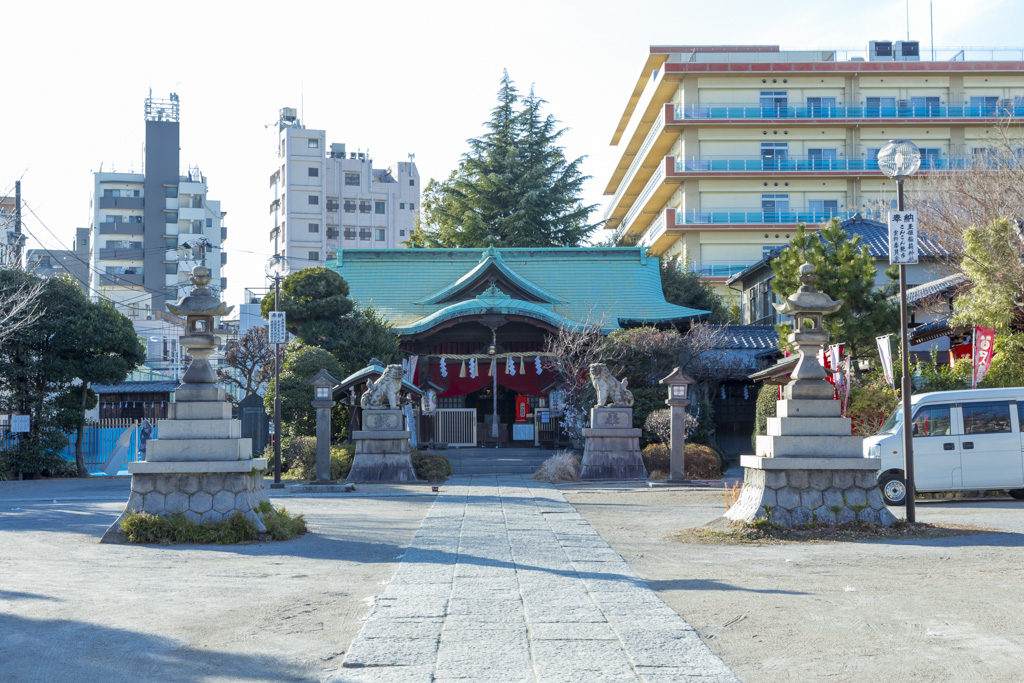
The foundation is Tempaira Buddhist Temple Fourth year (760 years) Now it is held twice a year, Konko shoe city is famous.Tamagi Inari is a small inari shrine located in the west field of Asakaiagahara, in contact with Tsuchiji Temple.(From sword customer sales)
⇩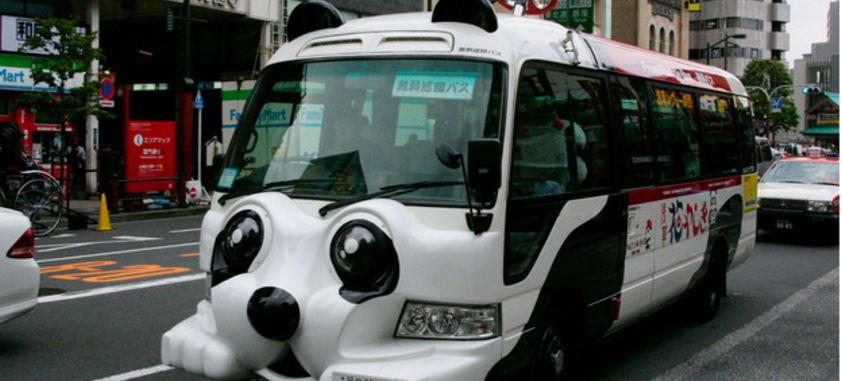
⇩
Break (meal) ICHIMON
Asakusa Kazumasa annexAsakusa 3 – chome 32-2, Taito ku Tokyo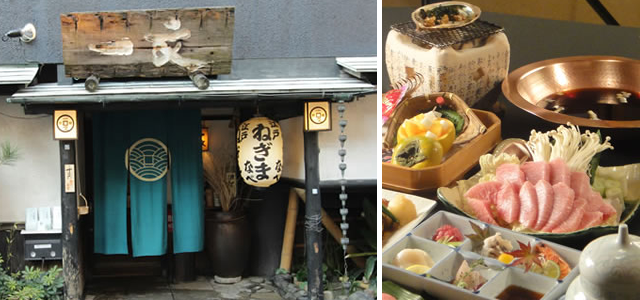
⇩
⑨ YOSHI WAR AOMON
Yoshihara Daimon Tokyo Sendai 4 – chome 10 Taito – ku, Tokyo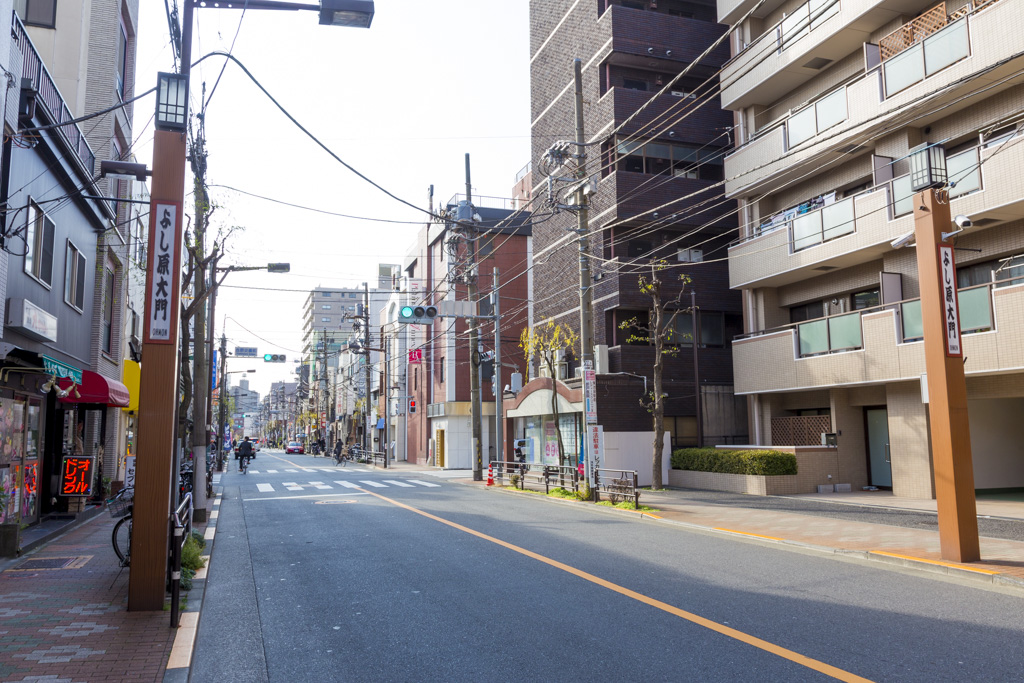
Yoshihara Daimon / The archaeological site of the gate which was set up at the entrance of Yoshiwara which is the authorization of the shogunate.In the Edo era, it was a black painted arched type gate (wooden), but it became an iron gate in the Meiji era, but it was destroyed by a big fire in 1911, and it was removed after the Great Kanto Earthquake.
⇩
⑩ YOSHIWARA JINJYA
Yoshihara Shrine 3-10-2 Sendobu Taito Ward Tokyo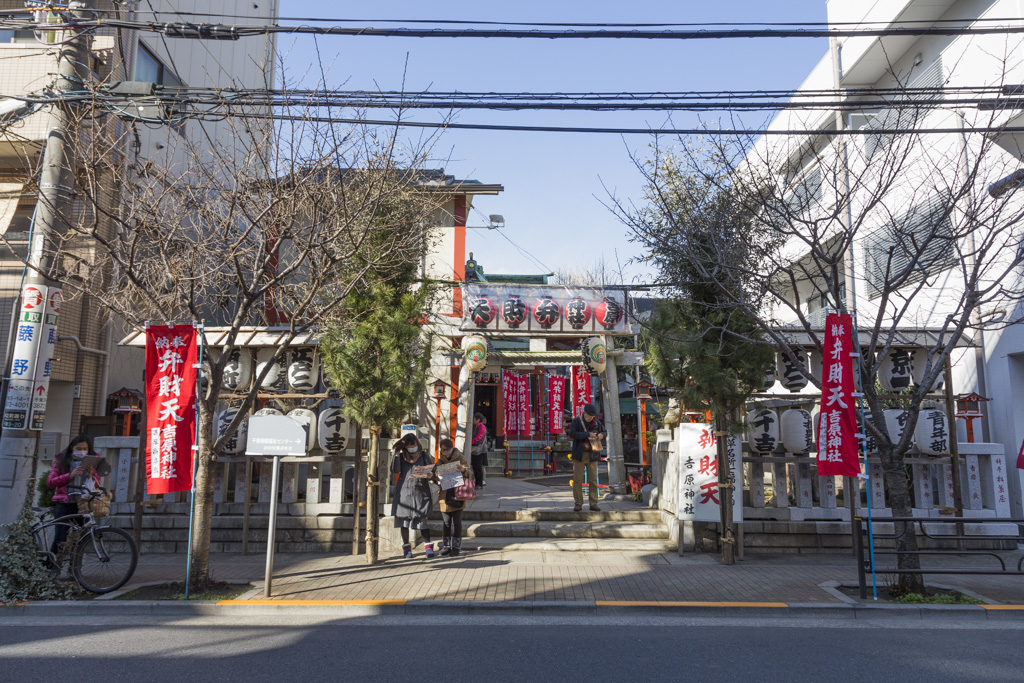
⇩
⑪ YOSHIWARA BENZAITEN
Yoshihara Bento-ten 3-22 Senju, Taito-ku, Tokyo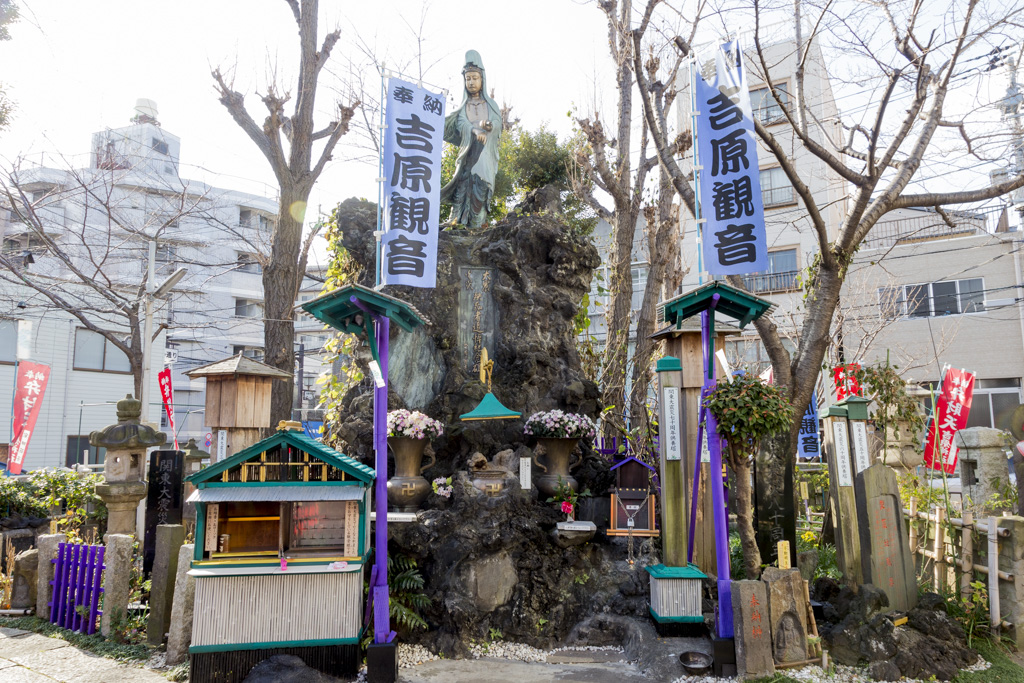
⇩
⑫SENGEN JINJYA
Asama Shrine 5-3-2 Asakusa, Taito-ku, Tokyo

Asama Shrine / Shrine recommended based on faith in Mt. Fuji, as “Shinto shrine”, “Wooden tree Hana Yuya Ya-Hime sitting image” is settled.Although the age of its creation is unknown, it seems that it was settled by the Hiroko 11 years (1671) in the early Edo period.During the Edo era, under the management of Shuinzakuin, Asakusa temple shrine, rituals were carried out by the Shurayama, and as a sacred place of Fuji faith which is representative of Edo, we gathered respect for Fuji lecture courses in various places.
During the Edo period, Mt. Fuji was a lifelong dream for the Edo people, so Mt. Fuji was born, and Shimousu Shrine was built all around the country.Its construction is unknown, and the torii are drawn in “Edo picture” before Genroku years.We enjoyed the benefits of Mr. Fuji more than enough.Why? Fellows secretly gathered Kaneko to be secretly divided, and this is also a merit.(From Onihei Konin Book)

Download flyers here
General participants Oku Asakusa sightseeing tour
*This post automatically translated by google translator*








